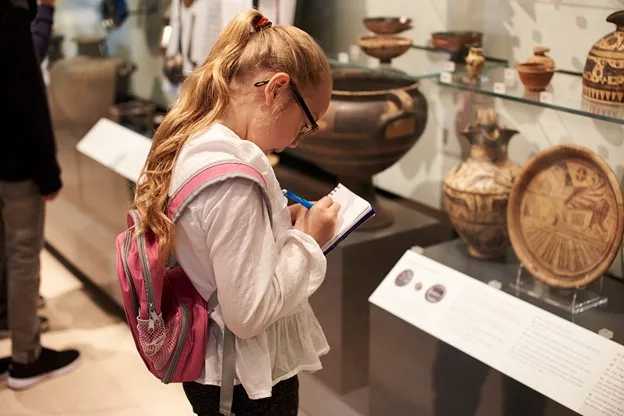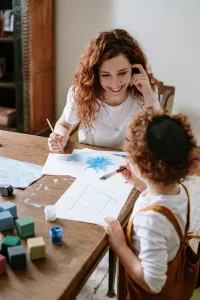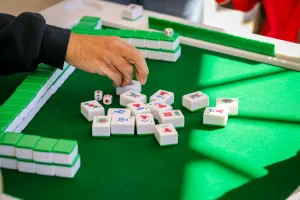The world is becoming increasingly racially and ethnically diverse. The United States, in particular, is home to a melting pot of cultures, with more than 1 million immigrants becoming residents in 2022 alone. The importance of teaching kids about other cultures has never been more pronounced. However, navigating the journey of cultural understanding with children can often feel like threading a delicate needle. They have a keen eye for spotting differences in others from a young age. Yet, in acknowledging and celebrating these differences, we unlock a broader perspective, enriching their young minds and nurturing empathy along the way.
In this blog, we will discuss how to explain culture to a child and explore engaging activities and creative avenues to introduce your little ones to the kaleidoscope of cultures. From culinary adventures to interactive storytelling, let’s examine the beauty of our global community, one colorful lesson at a time.
The Importance of Cultural Diversity for Kids
By teaching kids about diversity through exposure to a variety of cultures, traditions, and perspectives, parents provide their kids with essential social tools to flourish in our modern world. Learning about others’ differences instills in children the virtues of tolerance, respect, and empathy — qualities crucial for forming meaningful connections and understanding within their social circles.
Cultural competence is also associated with long-term educational success. Numerous studies conducted at various universities indicate a positive correlation between exposure to diverse environments and enhanced cognitive abilities. For instance, a national longitudinal study spanning 184 colleges and universities revealed a consistent link between students’ engagement with diversity and their academic performance. Those who interacted more with individuals from various racial backgrounds and actively participated in diversity-related activities and courses reported heightened intellectual engagement.
How to Explain Diversity to a Child
Explaining diversity to a child can be approached in a simple yet impactful manner. Encourage your child to ask questions about differences they observe, whether in appearance, culture, or background. By offering an open dialogue, you create an environment where curiosity is welcomed, and misconceptions can be addressed.
You should also emphasize the importance of respect and acceptance towards individuals who may look, think, or behave differently from them. Teach your child that diversity enriches our lives, just like a box of crayons with various colors allows for more creativity and expression than a box filled with only one shade. Through this comparison, children can grasp the concept that diversity adds depth and richness to our interactions and experiences, creating a sense of appreciation for the unique contributions each individual brings to the table.
13 Tips for Teaching Kids About Other Cultures
Teaching kids about cultures of the world doesn’t have to be boring with these thirteen fun tips.
1. Introduce Global Music and Dance
Get your little ones grooving to the beats of the world! Introduce them to a variety of global music genres and dance styles. From the rhythmic beats of African drums to the graceful movements of Indian classical dance, a whole world of music and dance is waiting to be explored. Help your kids listen to different music types and try out some basic dance steps. It’s a fun way to learn about other cultures and promotes creativity, coordination, and a love for music and movement.
 2. Cook International Cuisines
2. Cook International Cuisines
Take your taste buds on a trip around the globe by cooking up some international cuisines with your children. Choose a different country’s cuisine to explore each week and involve your kids in the cooking process. Let them help with tasks like measuring ingredients, mixing, and tasting.
Cooking together not only provides an opportunity to learn about different ingredients and cooking techniques but also encourages teamwork and an appreciation for a variety of culinary traditions. Plus, it’s a delicious way to bond as a family. To kick things off, give this kid-friendly Cantonese San Choy Bau (lettuce wrap) recipe a try!
3. Explore World Maps and Globes
Explore maps and globes with your kids to unravel the mysteries of the world. Point out different countries, continents, and oceans and discuss their unique features and cultures. You can make it interactive by playing games like “find the country” or “guess the capital.” This activity not only helps children develop their geography skills but also broadens their understanding of the world and its inhabitants.
4. Read Multicultural Books
Dive into the colorful world of multicultural literature with your children. Choose books that celebrate diversity and feature characters from various cultural backgrounds. Reading stories set in different countries or featuring characters with diverse experiences helps children develop empathy, compassion, and an appreciation for other perspectives. It’s also a great way to spark conversations about cultural differences and similarities and to inspire curiosity about the wider world.
5. Learn Simple Foreign Greetings
Teach your kids to say “hello” and “thank you” in different languages. Learning simple foreign greetings teaches children about language and communication and shows respect for other cultures. Inspire them to practice their newfound language skills when meeting people from different backgrounds or learning about other countries. It’s a small gesture that can make a big difference in supporting cross-cultural understanding and appreciation.
6. Celebrate Worldwide Festivals
Immerse your family in the vibrant tapestry of global festivals and celebrations. From Diwali to Chinese New Year and Carnival to Ramadan, there are many cultural festivities to explore. Research together and pick a few festivals to celebrate each year.
Engage in traditional activities like making crafts, cooking special foods, or attending local events. By participating in these celebrations, children gain firsthand experience of different cultural traditions, forging a sense of connection and appreciation for diverse cultures from around the world.
 7. Craft with Cultural Traditions
7. Craft with Cultural Traditions
Get creative with cultural crafts that reflect traditions from around the globe. From Japanese origami to Mexican papel picado, there are countless craft projects inspired by other cultures. Gather supplies and work on crafting together as a family.
Not only does this activity promote creativity and fine motor skills, it also provides an opportunity to learn about the cultural significance behind each craft. Whether making African masks or weaving friendship bracelets, crafting with cultural traditions allows children to explore the world’s artistic heritage in a hands-on and engaging way. Check out this “Mola:” Folk Art From Panamá craft for a fun place to start!
8. Watch Documentaries on Global Cultures
Expand your children’s horizons by watching documentaries that showcase cultural diversity. Look for age-appropriate films that explore different countries, customs, and ways of life. Sit down together as a family and watch these documentaries, pausing to discuss interesting facts or answer any questions your children may have.
Documentaries are a great tool for providing valuable insights into the richness and complexity of global cultures while also promoting critical thinking and curiosity about the world beyond their own.
9. Visit Museums and Cultural Exhibits
Take your children on a cultural excursion to museums and artistic exhibits in your area. Many museums feature exhibits that highlight various cultures’ art, history, and traditions. Plan a family outing to explore these exhibits together, taking the time to read and learn about different artifacts and displays.
Encourage your children to ask questions and engage with the exhibits, creating a sense of curiosity and appreciation for the diversity of human culture. Additionally, some museums offer interactive programs or workshops specifically designed for children, providing hands-on learning experiences that make cultural exploration even more engaging.
10. Discuss Family Heritage
Take a look at your family’s cultural heritage with your children. Share stories, traditions, and customs passed down through generations. Look at old photographs, heirlooms, or family recipes together and talk about their significance. Prompt your children to ask questions and express curiosity about their heritage.
By exploring their family’s cultural background, children gain a deeper understanding of their identity and roots and a greater appreciation for the diversity within their family tree.
11. Encourage Questions on Cultural Differences
Create an open and supportive environment where your children feel comfortable asking questions about cultural differences. Support curiosity and teach them it’s okay to be curious about things they don’t understand. Answer their questions honestly and respectfully, and use cultural awareness examples as opportunities to educate and broaden their perspective.
Creating a culture of inquiry and dialogue empowers your children to learn about and appreciate the diverse world around them.
 12. Play International Games
12. Play International Games
Introduce your children to games and activities from different countries and cultures around the world. From Mahjong, a classic Chinese game, to Indian board games like Pachisi, there’s a wide variety of games that offer a fun and educational way to learn about different cultures.
Teach your children the rules of these games and play together as a family. Not only does this promote cultural awareness, but it also promotes teamwork, problem-solving, and strategic thinking skills.
13. Promote Respect for Diversity
When promoting different cultures for kids, it’s essential to instill in them the value of respecting and embracing diversity in all its forms. Teach them that everyone is unique and deserves to be treated with kindness, empathy, and understanding, regardless of differences in race, religion, culture, or background. Lead by example by demonstrating inclusive behavior and speaking out against discrimination or prejudice. Encourage your children to stand up for others who may be marginalized or mistreated because of their differences.
By teaching diversity for kids from a young age, you help shape compassionate and empathetic individuals who contribute positively to creating a more inclusive and harmonious society.
Find an Au Pair with Go Au Pair
Choosing the right au pair for your family can be a transformative experience. Not only will it provide childcare support, but it will also enrich your child’s cultural worldview. By welcoming an au pair from another country into your home, you will open the doors to a deeper understanding and appreciation of different cultures. Through daily interactions, shared experiences, and cultural exchange, your child can develop lifelong friendships and gain invaluable insights into our world.
Take inspiration from our au pair interview questions to meet and find an au pair for your family today!



 2. Cook International Cuisines
2. Cook International Cuisines 7. Craft with Cultural Traditions
7. Craft with Cultural Traditions 12. Play International Games
12. Play International Games